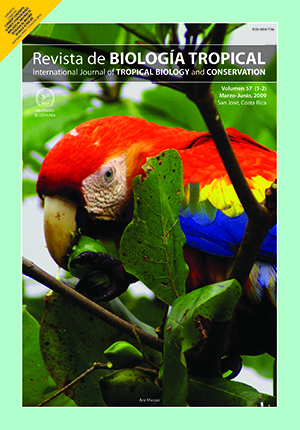Abstract
Lutzomyia pseudolongipalpis and Lutzomyia longipalpis (species C2, L. sp n.) are two endemic species of Phlebotominae sand fly vectors from Venezuela. The two insects are sympatric and monophyletic but have deeply diverging, morphological differences. They belong to the L. longipalpis complex. A study of their reproductive isolation is necessary to understand the process of speciation and maintenance of the two sister species as two discrete taxonomic and biological entities. Cross-mating tests were conducted (homo and hetero-specific) and monitored under two criteria: biological (presence of copulation and offspring) and genetic (using two isozymic markers diagnostic for the L. longipalpis complex; enzyme diagnosis AK and HK). Results indicate reproductive isolation, with an asymmetrical genetic exchange in a direction of hybridization between the two species under experimental conditions, and production of a low number of heterozygotes. These findings support the existence of negative selection on hybrids, and explain the absence of hybrids under natural conditions, in the sympatric locality
This work is licensed under a Creative Commons Attribution 4.0 International License.
Copyright (c) 2009 Revista de Biología Tropical
Downloads
Download data is not yet available.

